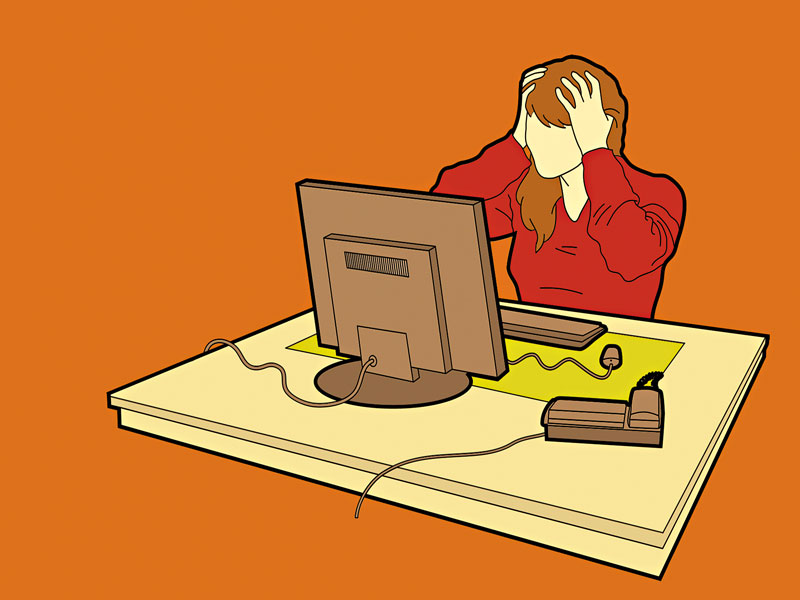Businesses must do more to support their employees’ mental health

The world is no longer ignoring mental health. It can’t.
Alongside the personal, unquantifiable impact of this mental health crisis, the economic costs are stark:
The pressure to attend work despite health problems is not conducive to employee wellbeing or good business
It’s not just governments feeling the impact of the global mental health crisis. Businesses – and their bottom lines – are bearing the brunt too. In January, Deloitte published a study titled
Hitting the bottom line
According to Deloitte’s report, presenteeism alone costs UK employers between £27bn ($34bn) and £29bn ($36.6bn) a year, pointing to a facetime culture so ingrained in our psyches that many don’t even question it. In its
The pressure to attend work despite health problems is not conducive to employee well-being or good business, but neither is absenteeism.
Enacting change
Last year, more than 40 CEOs from across the US, led by executives from Johnson & Johnson and Bank of America, attended the American Heart Association CEO Roundtable, where they set out strategies for employers to help workers manage depression, anxiety and other mental health conditions. Meanwhile, in the UK, 30 organisations signed up to the government’s
For some organisations, caring for the wellbeing of their workforce is nothing new; Johnson & Johnson established its
It is important to question whether companies are adopting programmes for the sake of ticking boxes and looking good
“That’s because they wanted to retain top talent. They were hit the worst during the recession – there were fewer people doing more work, feeling more job insecure, working longer hours and getting ill from stress-related illnesses, so they weren’t retaining people.”
Among those leading the wellbeing trend in the sector was UK bank Barclays. The company launched its
Lloyds says its initiatives have helped to open up the conversation around mental health and improve employee engagement. “Over the past three years, we have seen an increase in the number of colleagues who feel comfortable telling us they have a mental health issue,” said Fiona Cannon, Director for Responsible Business, Sustainability and Inclusion at Lloyds. “The engagement level of colleagues with a mental health condition has also increased by 22 percentage points.”
Businesses outside the banking sector have started to take action too, and with positive results.
Barriers to progress
Cooper explained that the success of mental health first aid training in particular was still up for debate: “Companies use it because it’s easy – they send their employees on a training programme, but there’s no clear evidence it works yet. There are lots of questions about it: should employers select people instead of asking for volunteers? Is the training adequate? Is it actually effective for employees, or does it benefit the mental health first aiders themselves more than their colleagues?”
Employee assistance programmes (EAPs) are another topic that’s up for debate. They have a great deal of potential, providing free assessments, short-term counselling, referrals and follow-up services for employees, yet their effectiveness is unclear. A report by
It is important to question whether companies are adopting programmes for the sake of ticking boxes and looking good, rather than implementing strategies that actually work. In reality, the uptake of EAPs is limited. Research by
While the conversation around mental health has changed substantially in recent years, for many it’s still a difficult subject
According to Unum’s report, 93 percent of employers said that their company provided an EAP, but just 38 percent of employees knew this resource was available to them. The same knowledge gap existed in relation to other mental health resources (
see Fig 2
). This is due, in part, to inadequate training. According to Unum’s report, only a quarter of managers in the US have been trained on how to refer colleagues to mental health resources, and more than half of employees were unsure of how they would help someone who came to them with a mental health issue.
The stigma surrounding mental health is another barrier to the uptake of support schemes. While the conversation around mental health has changed substantially in recent years – in
“Many of those struggling with mental illness keep their issues secret, often fearing discrimination, reputational problems, or even the loss of their job,” Mitchell said. “But mental health issues are prevalent and treatable and/or manageable. Someone with a mental health issue such as depression or anxiety should not be treated any differently than an employee with heart disease or asthma.”
Culture shock
For Unum medical consultant David Goldsmith, our growing reliance on technology and the move away from physical interaction is the problem. “Five years ago, I would sit in a room with my peers and talk face to face,” he said at a Disability Management Employer Coalition webinar on mental health. “As technology moves along, I spend more time looking at a computer screen and talking on a headset… We’re driven by metrics. Everything is monitored and the employee feels threatened… The bond between the employer and the employee doesn’t feel like family anymore.”
The costs of poor mental health come from a variety of factors. Laurie Mitchell, Assistant Vice President for Global Wellbeing and Health Management at Unum Group, explained: “Lost productivity, lower morale or ‘presenteeism’, when employees continue to work, yet function at a lower level than when they are healthy, mean costs can add up for employers. When you consider that nearly half of employees say they’ve struggled with their mental health in the previous year, it’s easy to see the impact.”

Businesses have started to wake up to the importance of looking after their employees’ mental health. According to HR consultancy Buck’s global 2018

While such progress is promising, there is more to be done. Those businesses already taking action are the exception rather than the rule, with 60 percent of organisations across the world still operating without a wellbeing strategy in place, according to Buck’s survey. In the UK, the same survey found that only 26 percent of businesses had implemented a strategy. Concerningly, even among those that have introduced initiatives, many aren’t evaluating their success. “Unfortunately, a lot of companies will do mental health first aid training, or they’ll do mindfulness at lunch, and they don’t know whether it works or not,” Cooper said. “They just do it because it’s low-hanging fruit, it’s easy to do, and it doesn’t cost much.”

Wellbeing programmes – even those with a decent uptake and proven return on investment – can only go so far. Prevention is the real key to easing the mental health crisis. Deloitte’s report showed that organisation-wide cultural change, education and other early interventions produced a higher return on investment than later-stage, in-depth support tools. Such culture changes involve a fundamental review of our working lifestyles and a thorough analysis of what is causing work-related mental health issues.









